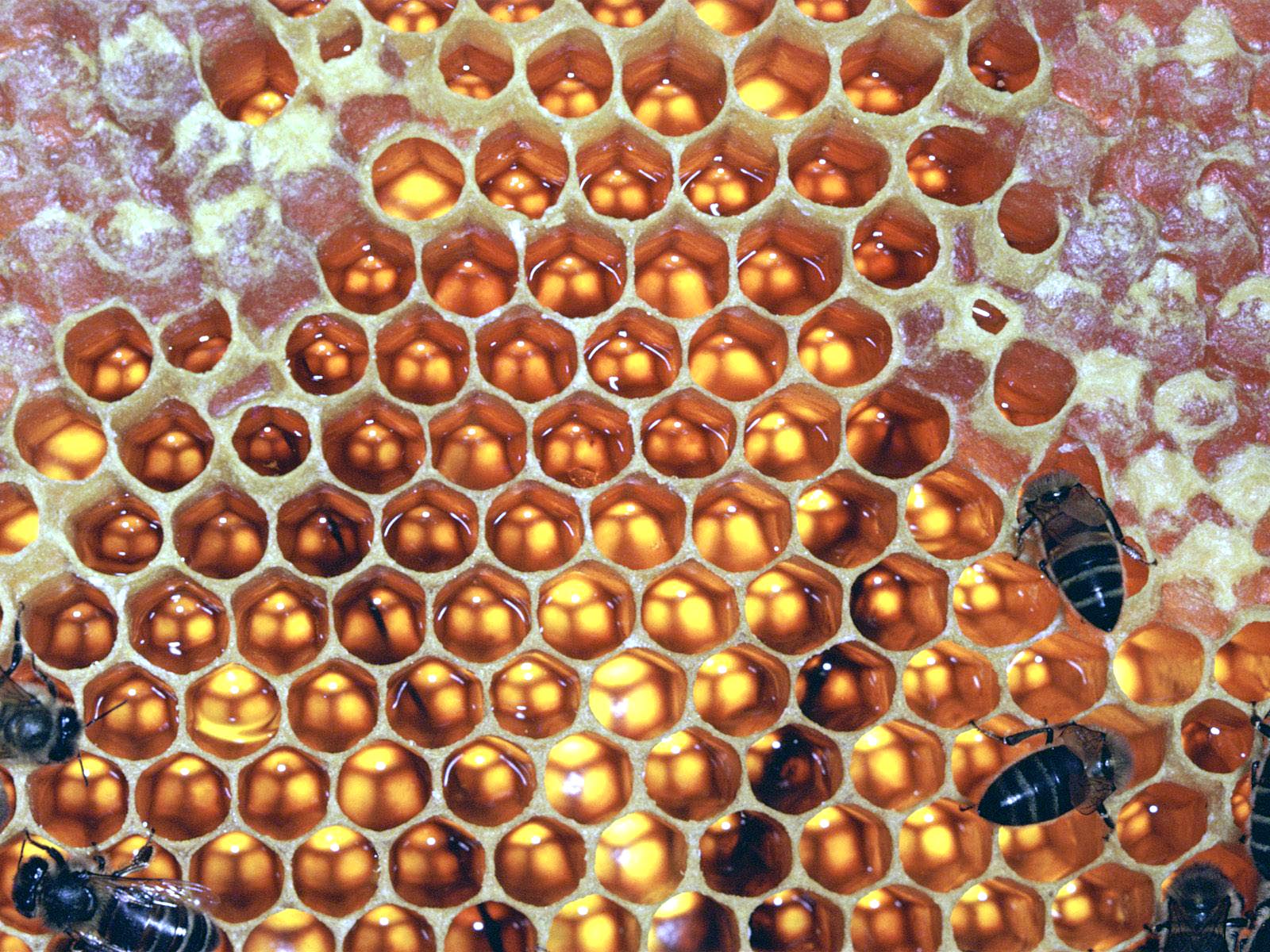Previously, we commented on the feeding and communication of the bees, an interesting and wonderful world of these insects, which in today’s post we will have to talk about their life cycle, which varies between 16 and 23 days, depending on the type of bee.
Queen bee

Honeybees are very interesting insects in many aspects, they survive and perpetuate as a unit that we call a colony. The queen bee depending on weather conditions usually begins to lay eggs in the spring. This activity is conditioned by the information received externally (for example flow of nectar, pollen gathering, length of day, temperature, etc.). The queen bee is the only fertile female and deposits the eggs from which all other bees will be born. The queen bee does not leave the hive, except during the fertilization flights, or when a swarm is produced, in order to create a new hive of bees. The queen bee lays her eggs in honeycomb panels that the workers build with hexagonal cells. The egg after the third day turns into a small larva which is fed by the nurse bees (young worker bees). After about a week, the larva is sealed in its cell by the nurse bees, arriving at the pupal stage. In approximately another week, the adult bee emerges. Queen bees are not raised in the typical horizontal cells of the honeycomb, but their cells are built to be much larger and in upright position. Moreover, they are not fed with pollen, just like the larvae of the workers, but with royal jelly. It has been shown that it is this special feeding, what makes a female bee develop as queen bee and not as worker bee. When the queen bee finishes her larval feeding stage and is converted in a pupa, it moves to a head down position. During the pupal stage, the worker bees cover, plug or seal the queen cell. Just after emerging from their cells, often the queen bees produce a sound which is believed to be a challenge to other queen bees to battle.
Queen bees live an average of three years. Worker bees live much shorter life cycles, of
less than three months on average. Queen bees release pheromones to regulate the activities of the apiary. The queen pheromones, among other things, modify the behaviour of the worker bees, so that they feed the new larvae, as worker bees and not as queen bees, in normal conditions.
Many worker bees also produce pheromones to communicate with other bees.
Life cycle
[mk_table]
| Tipo | Huevo | Larva | Operculado | Pupa | Período desarrollo | Fertilidad |
| Queen | 3 days | 5 1/2 days | 7 1/2 days | 8 days | 16 days | approx. 23 days |
[/mk_table]
Workers
 Worker bees are infertile females. They secrete the wax used to build the wax panels and are also responsible for cleaning and maintaining the hive, raise the larvae, monitor the honeycomb and collect nectar and pollen. In worker bees their egg laying organ has been modified into a stinger, which serves to inject poison produced by abdominal glands; they can stick it to an enemy to defend themselves, but the bees die shortly after nailing their stinger, as its incisive sharp form prevents its removal, as the gland is attached thereto and is torn when trying to remove it
Worker bees are infertile females. They secrete the wax used to build the wax panels and are also responsible for cleaning and maintaining the hive, raise the larvae, monitor the honeycomb and collect nectar and pollen. In worker bees their egg laying organ has been modified into a stinger, which serves to inject poison produced by abdominal glands; they can stick it to an enemy to defend themselves, but the bees die shortly after nailing their stinger, as its incisive sharp form prevents its removal, as the gland is attached thereto and is torn when trying to remove it
Life cycle
[mk_table]
| Tipo | Huevo | Larva | Operculado | Pupa | Período desarrollo | Fertilidad |
| Worker | 3 days | 6 days | 9 days | 12 days | 21 days | Doesn’t have |
[/mk_table]
Drone bees
 Drones are the male bees of the colony. The eggs that will later produce drones have not been previously fertilized. Therefore they have half of the genetic make-up of the species. Drones collect neither nectar, nor pollen. The main purpose of the drone bees is to fertilize the new queen. These mate with the queen in full flight. After finishing copulation, the drone bee dies. The Queen bee copulates with several drone bees (more than 15) on various flights of fertilization. Drones do not possess stinger, since the stinger is actually a modified egg laying organ.
Drones are the male bees of the colony. The eggs that will later produce drones have not been previously fertilized. Therefore they have half of the genetic make-up of the species. Drones collect neither nectar, nor pollen. The main purpose of the drone bees is to fertilize the new queen. These mate with the queen in full flight. After finishing copulation, the drone bee dies. The Queen bee copulates with several drone bees (more than 15) on various flights of fertilization. Drones do not possess stinger, since the stinger is actually a modified egg laying organ.
Life cycle
[mk_table]
| Tipo | Huevo | Larva | Operculado | Pupa | Período desarrollo | Fertilidad |
| Drone bee | 3 days | 6 1/2 days | 10 days | 14 1/2 days | 24 days | aprox. 38 days |
[/mk_table]

